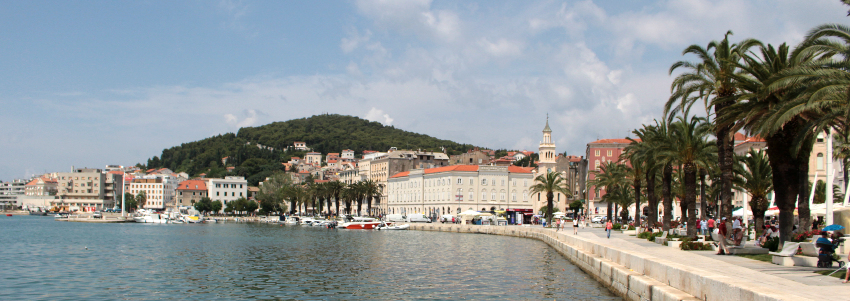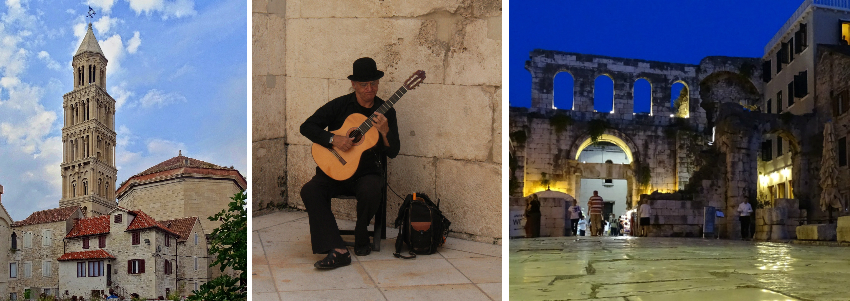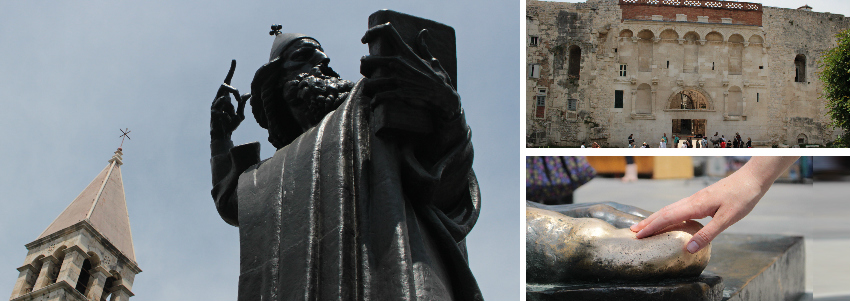The “Split List”
City sights you don’t want to miss in Split, Croatia
Split, Croatia’s second largest city, is a major gateway to endless options for exploring the breathtaking islands of Dalmatia’s Coast. The waterfront city is a seamless combination of spectacular history and an inviting urban scene. For those arriving in Split before Bicycling the Islands of the Dalmatian Coast, we suggest giving yourself at least a day to explore this magical city. Here’s a quick “Split-list” of must-see sights.
Diocletian’s Palace is geographically, and culturally, at the heart of Split. Occupying the space of nine football fields, the palace was built at the turn of the 3rd century A.D. The palace once housed thousands and today boasts more that 200 commercial and residential structures. Day four of our Dalmatia tour takes you on a guided tour of Split, but in your free time, don’t miss the many galleries, shops, bars and cafes as you explore the sprawling white stone streets.
The Cathedral of St. Domnius is an octagonal shaped church that was originally built as Diocletian’s mausoleum. Encircled by 24 columns, the round-domed interior has remarkable scenes of Christ carved into the wooden entry doors. An entrance fee to the Cathedral also grants you access to the Temple of Jupiter and its crypt. Constructed from 295 to 305 AD, the temple was dedicated to Diocletian’s divine father, Jupiter.
Street Performers are sprinkled all throughout Split’s many city squares and narrow streets. Follow music down the twisting alleys of the palace until you find yourself among crowds brought to life by the sounds of foreign instruments, acrobatic feats, and skits that will leave you buckling over with laughter.
The Green Market sits just outside of the city’s walls. Here you can find vendors selling fresh fruit and veggies, local honey, cheese, flowers, nuts, and souvenirs. It’s the perfect place to grab a snack before taking a stroll along the waterfront – Riva, or hiking Marjan Hill for a birds-eye view of the city.
The Statue of Gregory of Nin sits just outside the north gate of the Palace. This Croatian bishop was known for acting out against the Pope and official circles of the Church and introducing the national language into religious services that were previously held strictly in Latin. Rubbing the toe of this towering statue is said to bring good luck.
The Riva (or waterfront) is a palm tree lined promenade ideal for taking a stroll, and perhaps even snagging a seat at one of the many restaurants to taste one of Croatia’s many fine wines.
Marjan Hill zig zags up through leafy pine forests with many opportunities to catch your breath while admiring sweeping coastal views. This light 1.5 mile hike rewards you with an areal view of the city’s warm rooftops meeting the cool blue Adriatic. Before following the coastal walkway back into the city center, take a dip at Bene Beach and cool off as the glassy waters lap against the pebble beach.





